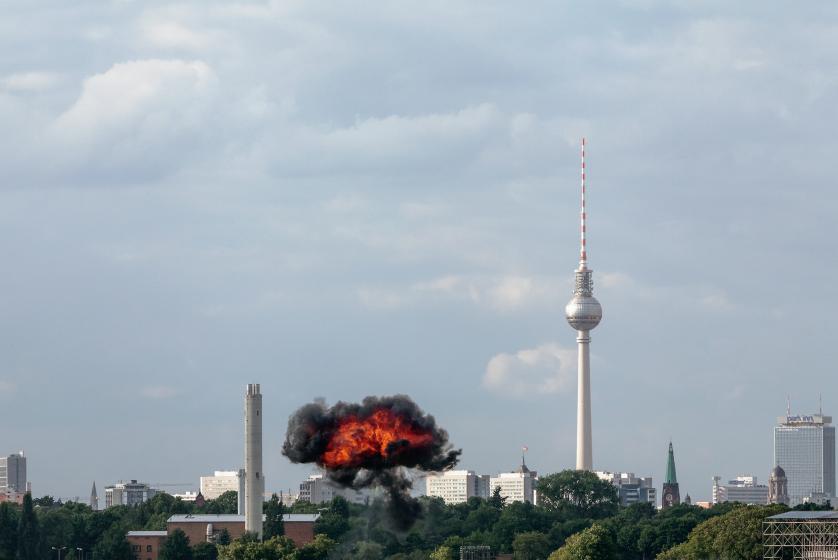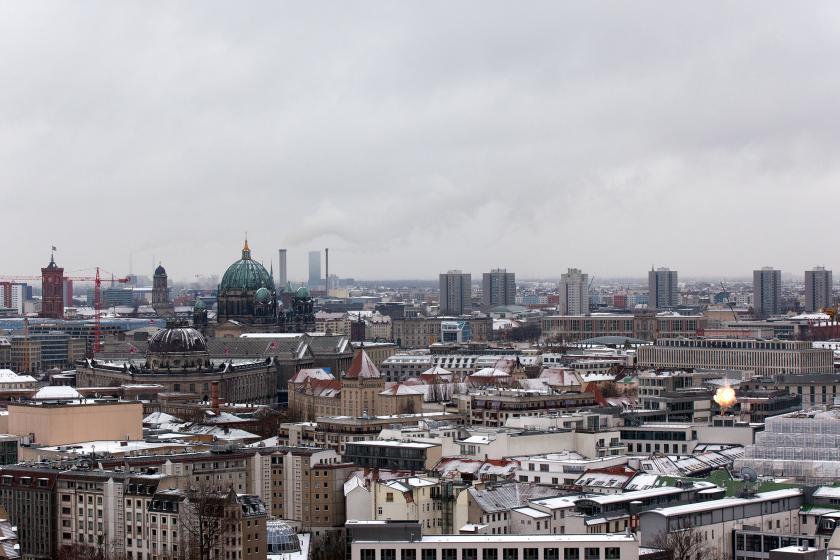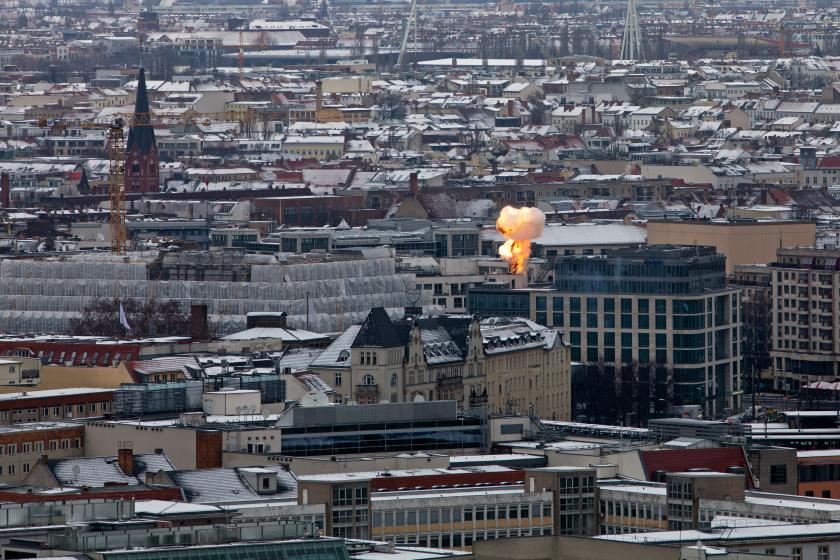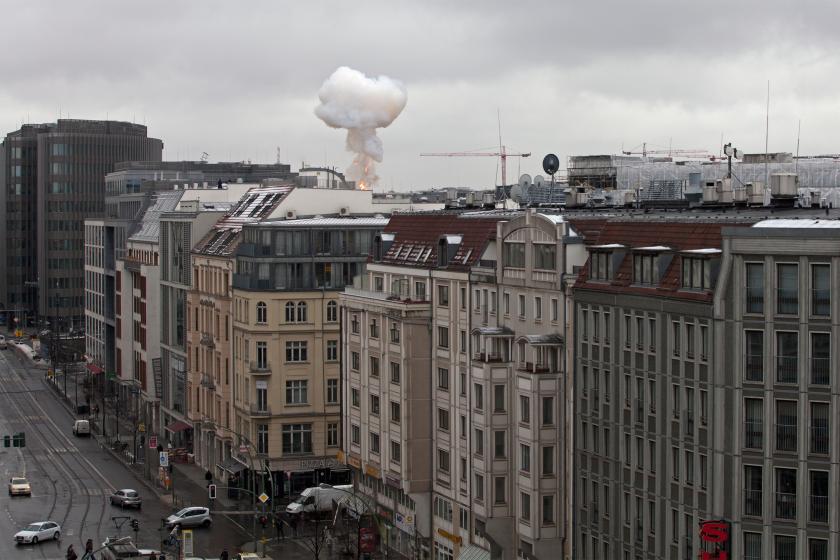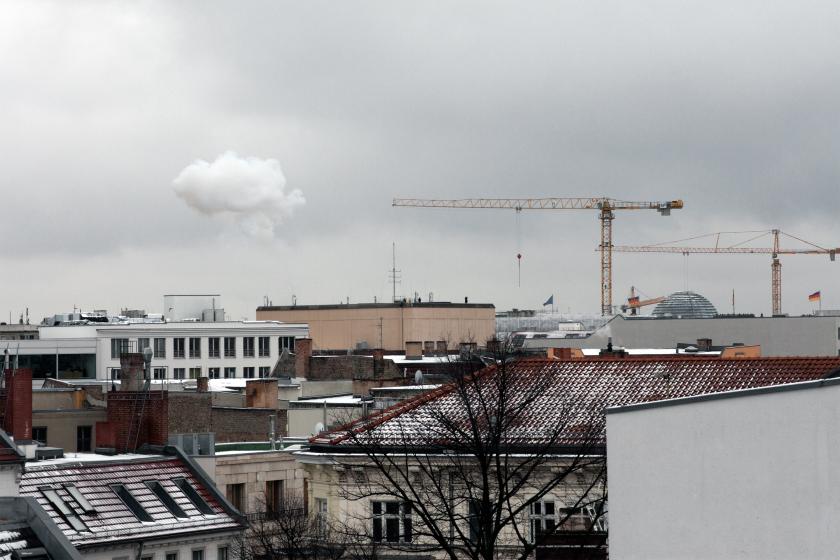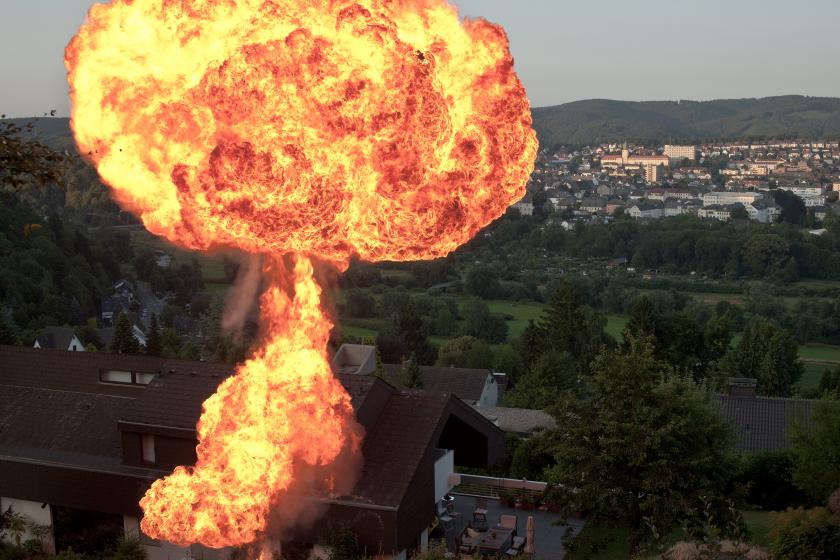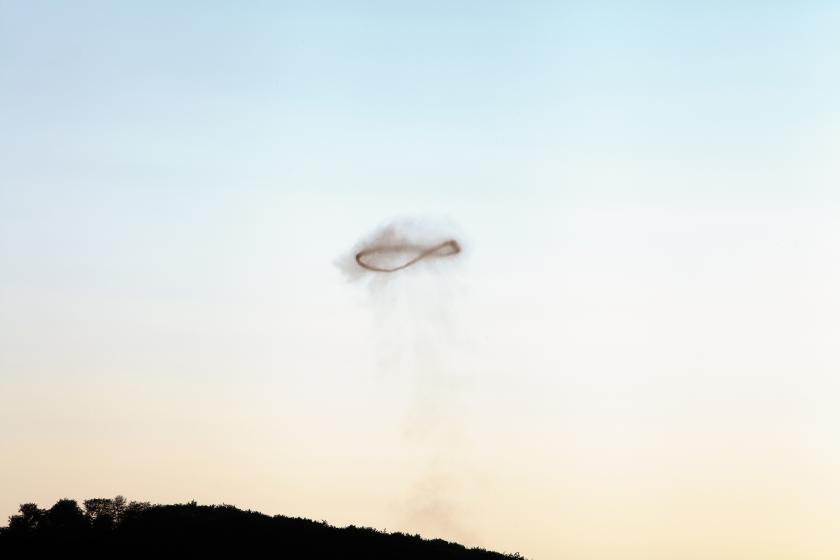Explosions Set in Different Places
lycopdium, petrol, fuse
Explosive is placed and ignited on location by the artist. The detonation creates a time based sculpture.
Fabian Knecht and Andreas Greiner, various places 2012 - 2013
--
When things explode, the space they inhabit expands many times over within a very short period of time. The space is suddenly reconfigured; within a split second, change has occurred. An explosion is always “now”. It punctuates the present.
The momentary disorientation experienced by those who witness an explosion – unforeseen – will linger. The experience is intensified by its very transience – it’s over as soon as it begins; the moment comes and goes in the blink of an eye. And yet the explosion will impact its immediate surroundings, even – or particularly – if it leaves no destruction in its wake. An explosion that causes no destruction: is this the “representation” of an explosion? Are explosions without consequences illusionary? The explosion forces its surroundings into a new context.
For a moment Berlin seems under threat, it has become a crisis area. News footage shifts from image to reality. Boundaries dissolve. The space needs to be reconfigured.
Can an explosion qualify as an artwork? Is it allowed to? Or should it be rejected on ethical-moral grounds? Does art (a phenomenon of the elite?) have to be morally justified? Are we allowed to see the beauty of an explosion, may we find destruction aesthetic? When does a work of art become decadent and when is it seen as critical? Can it be both simultaneously? When is art commentary and when is it part of the problem? Do these questions need answering before the piece is performed? Or does the explosion need to be carried out before we can tackle these questions in earnest?
Andreas Greiner and Fabian Knecht’s intervention creates an ambivalent and wholly ambiguous aesthetic experi- ence. Their explosion (or representation of an explosion) shatters the routine of the day, provoking an exception,
a temporary state of emergency. By causing a moment of irritation followed by reflection they make way for a different aspect of the every day, an aspect we prefer to ignore: the pain and beauty concealed in the blind spot of the present. Explosions are always in the “here and now”.
Text by Lukas Töpfer, Januar 2013 Translation by Julie Kamprath

